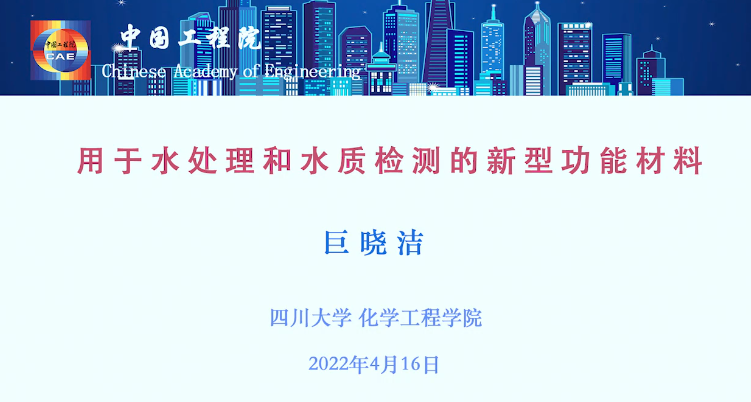检索范围:
排序: 展示方式:
Experience gained in analyzing severe accidents for WWER RP using CC SOCRAT
《能源前沿(英文)》 2021年 第15卷 第4期 页码 872-886 doi: 10.1007/s11708-021-0796-2
关键词: system of codes for realistic analysis of severe accidents (SOCRAT) design basis accidents (DBAs) severe accidents (SAs) computer code (CC) nuclear power plant (NPP) design water-cooled water-moderated (WWER) modeling model safety requirements
Corrosion mechanisms of candidate structural materials for supercritical water-cooled reactor
Lefu ZHANG, Fawen ZHU, Rui TANG
《能源前沿(英文)》 2009年 第3卷 第2期 页码 233-240 doi: 10.1007/s11708-009-0024-y
关键词: supercritical water-cooled reactor general corrosion oxide film corrosion mechanism
Studies on advanced water-cooled reactors beyond generation III for power generation
CHENG Xu
《能源前沿(英文)》 2007年 第1卷 第2期 页码 141-149 doi: 10.1007/s11708-007-0018-6
关键词: Chinese situation selection generation water-cooled feasibility
Xinggang LI, Qingzhi YAN, Rong MA, Haoqiang WANG, Changchun GE
《能源前沿(英文)》 2009年 第3卷 第2期 页码 193-197 doi: 10.1007/s11708-009-0030-0
关键词: supercritical water cooled reactor tensile impact toughness corrosion aging
Experimental study of critical flow of water at supercritical pressure
Yuzhou CHEN, Chunsheng YANG, Shuming ZHANG, Minfu ZHAO, Kaiwen DU, Xu CHENG
《能源前沿(英文)》 2009年 第3卷 第2期 页码 175-180 doi: 10.1007/s11708-009-0029-6
关键词: critical flow supercritical water-cooled reactor(SCWR) reactor safety loss of coolant accident(LOCA)
Zekun LIU, Shuang YUAN, Yi YUAN, Guojian LI, Qiang WANG
《能源前沿(英文)》 2021年 第15卷 第2期 页码 358-366 doi: 10.1007/s11708-020-0712-1
关键词: photovoltaic (PV) thermoelectric generator conversion efficiency hybrid energy systems water-cooled plate (WCP)
An old issue and a new challenge for nuclear reactor safety
F. D’AURIA
《能源前沿(英文)》 2021年 第15卷 第4期 页码 854-859 doi: 10.1007/s11708-021-0729-0
关键词: large break loss of coolant accident (LBLOCA) nuclear reactor safety (NRS) licensing perspectives basis for design of water cooled nuclear reactors (WCNR)
冷热电联产系统中气冷式微型透平机的发电耗水、空气污染物排放及成本影响:亚特兰大地区案例研究 Article
Jean-Ann James, Valerie M. Thomas, Arka Pandit, Duo Li, John C. Crittenden
《工程(英文)》 2016年 第2卷 第4期 页码 470-480 doi: 10.1016/J.ENG.2016.04.008
城市化进程的加快意味着城市和国际组织需要去寻找各种能够提高能源效率和减少空气中污染物排放的方法。冷热电联产(CCHP) 系统可以同时供暖、制冷和发电,具有提高城市或城市区域能源发电效率的潜力。本研究的目的是在满足建筑热需求(供热和制冷) 的各种运行条件下,对亚特兰大大都市区内的五种常见建筑类型在采用CCHP 系统时的发电耗水、CO2 和NOx 排放,及其经济性进行评价。对于大多数采用或不采用净计量策略的建筑类型来说,以满足每小时热需求去运行CCHP 系统均可减少CO2 的排放量。该系统能否对这些建筑类型产生经济效益,主要取决于天然气的价格、净计量策略的采用和假定的CCHP 系统的成本结构。当建筑物采用净计量策略并且CCHP 系统是以满足建筑物每年的最大热需求而运行时,CCHP 系统的发电耗水量和NOx 的排放量均有最大限度的减少,尽管此时该运行情景会增加温室气体排放和发电成本。CCHP 系统对中型办公楼、大型办公楼和多户型住宅建筑更经济、实用。
关键词: 冷热电联产(CCHP) 气冷式微型透平机 分布式能源发电 发电耗水 净计量
Dynamic simulation of a space gas-cooled reactor power system with a closed Brayton cycle
《能源前沿(英文)》 2021年 第15卷 第4期 页码 916-929 doi: 10.1007/s11708-021-0757-9
关键词: gas-cooled space nuclear reactor power closed Brayton cycle system startup and shutdown positive reactivity insertion accident

刘更另
《中国工程科学》 2000年 第2卷 第7期 页码 39-42
文章从水性质特点谈到中国水资源的问题,认为不能单纯用年平均降雨量的多少来判定中国水资源的状况,水资源开发利用的好坏决定于人类社会的调节和管理。中国水资源总的来说是够用的,最大问题是降水量的时空分布不平衡。
中国农民几千年来创造了许多治水蓄水用水的经验。农业节水非常重要,关键在"分散蓄水,分散使用",以减少径流在汇集和分散过程中的损失和污染,在提高水的利用效率方面有一系列的科研和实际工作要做。

Daniel P. LOUCKS, Haifeng JIA
《环境科学与工程前沿(英文)》 2012年 第6卷 第2期 页码 255-264 doi: 10.1007/s11783-011-0359-6
关键词: water stress aquatic ecosystems sustainable water resource allocations ecosystem water requirements
La ZHUO, Arjen Y. HOEKSTRA
《农业科学与工程前沿(英文)》 2017年 第4卷 第2期 页码 185-194 doi: 10.15302/J-FASE-2017149
关键词: field management irrigation efficiency water footprint water productivity water use efficiency
Xiaojian ZHANG , Chao CHEN ,
《环境科学与工程前沿(英文)》 2009年 第3卷 第3期 页码 364-368 doi: 10.1007/s11783-009-0027-2
关键词: emergency drinking water treatment water pollution adsorption oxidation precipitation
标题 作者 时间 类型 操作
Corrosion mechanisms of candidate structural materials for supercritical water-cooled reactor
Lefu ZHANG, Fawen ZHU, Rui TANG
期刊论文
Feasibility analysis of modified AL-6XN steel for structure component application in supercritical water-cooled
Xinggang LI, Qingzhi YAN, Rong MA, Haoqiang WANG, Changchun GE
期刊论文
Experimental study of critical flow of water at supercritical pressure
Yuzhou CHEN, Chunsheng YANG, Shuming ZHANG, Minfu ZHAO, Kaiwen DU, Xu CHENG
期刊论文
A thermoelectric generator and water-cooling assisted high conversion efficiency polycrystalline silicon
Zekun LIU, Shuang YUAN, Yi YUAN, Guojian LI, Qiang WANG
期刊论文
冷热电联产系统中气冷式微型透平机的发电耗水、空气污染物排放及成本影响:亚特兰大地区案例研究
Jean-Ann James, Valerie M. Thomas, Arka Pandit, Duo Li, John C. Crittenden
期刊论文
巨晓洁:用于水处理和水检测的新型功能材料(2022年4月16日)
2022年06月09日
会议视频
王光谦:全球水循环与水资源利用(2019年10月17日)
王光谦(院士)
2021年01月20日
会议视频
The effect of different agricultural management practices on irrigation efficiency, water use efficiencyand green and blue water footprint
La ZHUO, Arjen Y. HOEKSTRA
期刊论文








